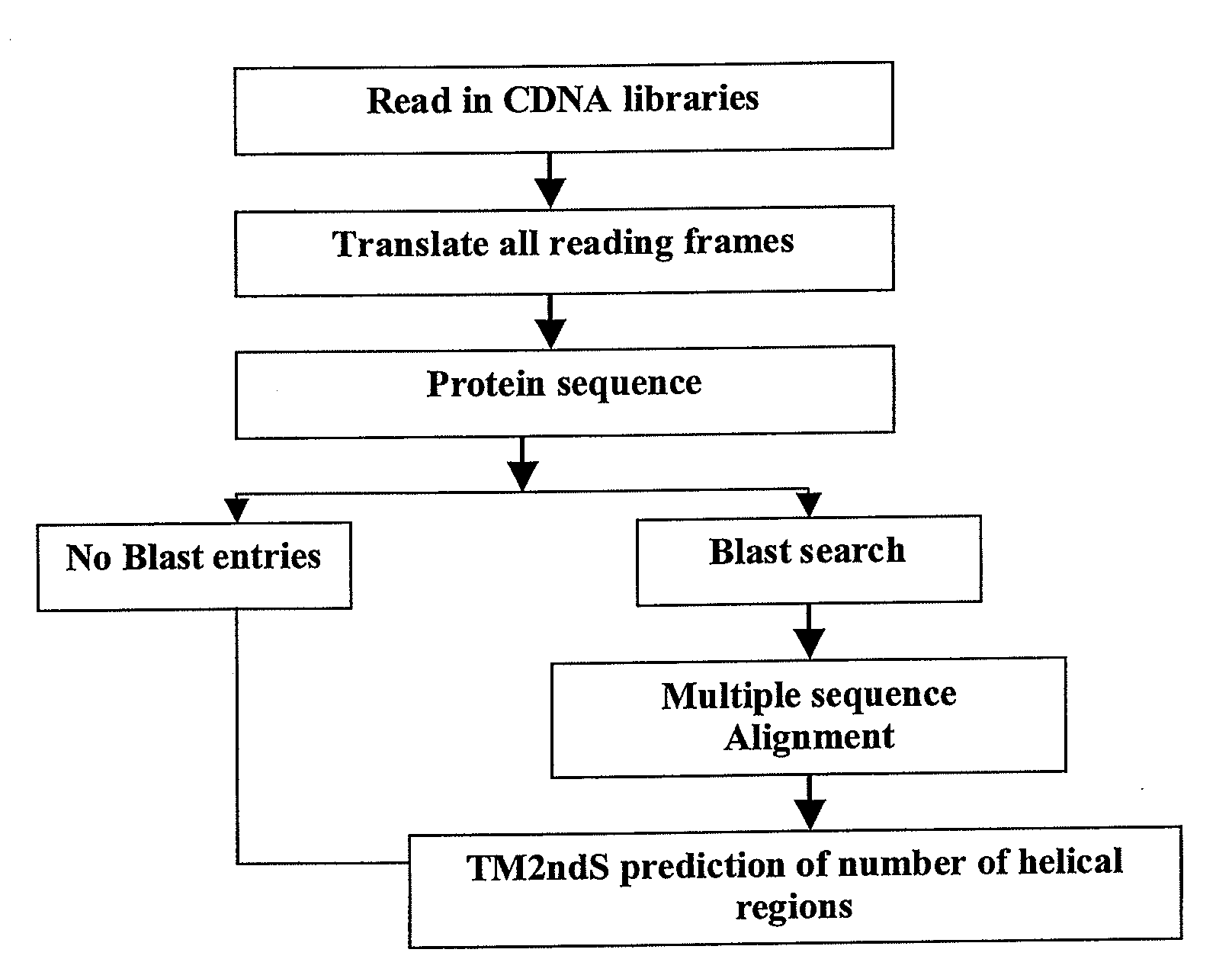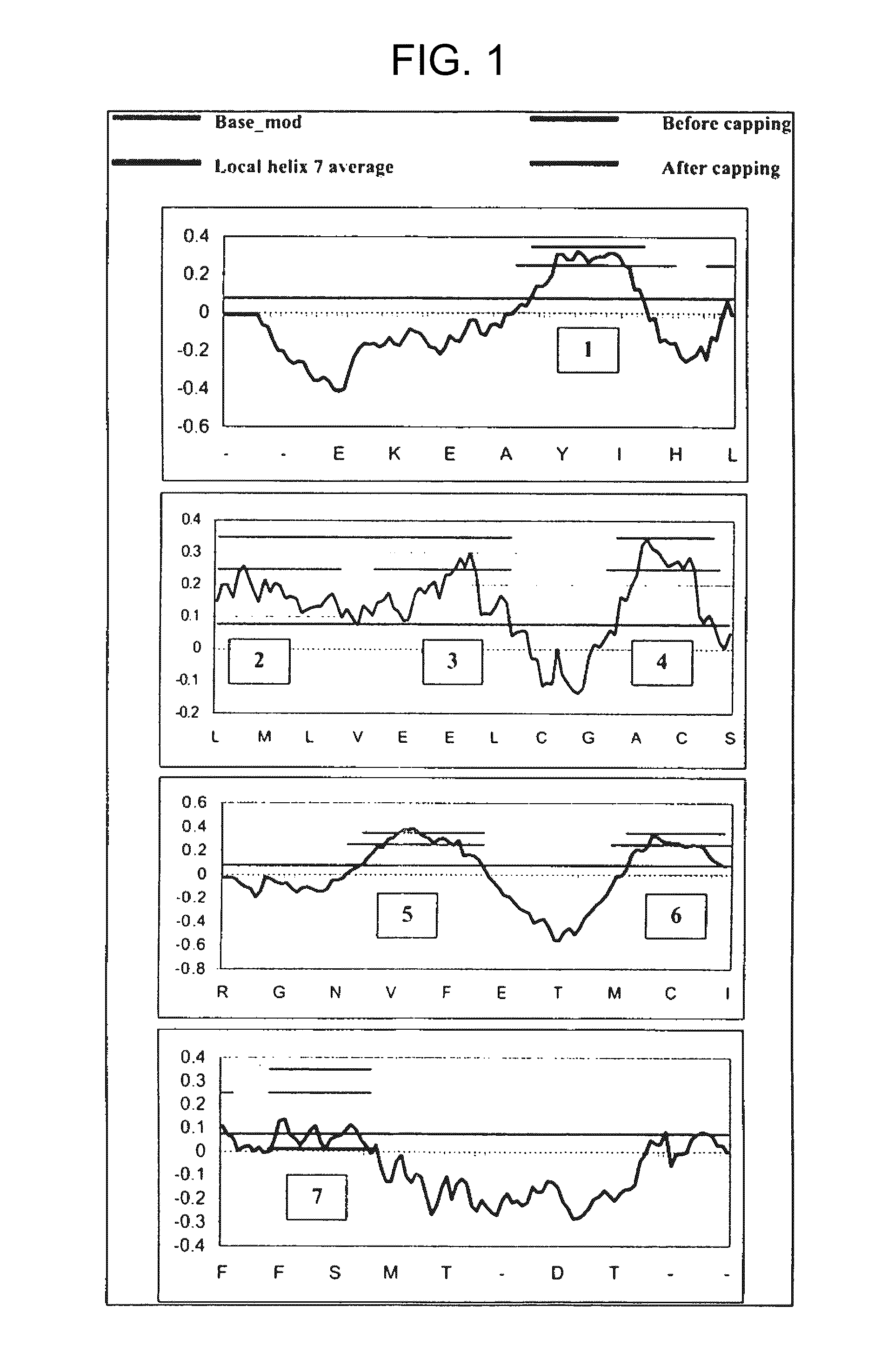System and methods for predicting transmembrane domains in membrane proteins and mining the genome for recognizing g-protein coupled receptors
a technology of membrane proteins and genomes, applied in the field of system and methods for predicting transmembrane domains in membrane proteins and mining the genomes for recognizing gprotein coupled receptors, can solve the problems of undesirable side effects, time-consuming and expensive techniques, and the difficulty of determining the tertiary structure of proteins, and achieve the effect of fast and accurate procedure for predicting
- Summary
- Abstract
- Description
- Claims
- Application Information
AI Technical Summary
Benefits of technology
Problems solved by technology
Method used
Image
Examples
example 1
Validation of the Method by Predicting TM Helices in Bovine Rhodopsin
[0182]We have used the TM2ndS algorithm for predicting the structure for about 10 very different GPCR classes (Vaidehi, N., W. B. Floriano, R. Trabanino, S. E. Hall, P. Freddolino, E. J. Choi, G. Zamanakos, and W. A. Goddard. 2002. Prediction of structure and function of G-protein-coupled receptors. Proc. Natl. Acad. Sci. USA. 99:12622-12627). In each case the predicted binding site and binding energy agrees well with available experimental data, providing some validation of the TM region prediction. However only for bovine rhodopsin can we make precise comparisons to experimental structures. We have also used TM2ndS to predict the TM regions and length of TM regions for membrane proteins for which crystal structure is available. Our predictions give 100% of the database as membrane proteins. The length of the TM regions is predicted to within 2 residues of the crystal structure on either carboxy or amino terminus....
example 2
GPCR Mining From the Genome
[0193]Using the TM2ndS module without the capping functionality, and in an automated fashion, we have searched the cDNA sequences in databases that are annotated to be proteins in the genome. The flowchart of this automated version of TM2ndS for data mining is shown in FIG. 3. Instead of applying a multiple sequence alignment on various sequences, one sequence was used for TM2ndS prediction (as on left side of flowchart). We used the cDNA sequences from the Riken database (J. Kawai, A. Shinagawa, et al. 2001, Nature, 409, 685-690) for this purpose, and the results for GPCR mining are given below.
[0194]The Riken Mouse Gene Encyclopedia Project was aimed at determining the function of a full cDNA library obtained for the Mouse genome. This is a good validation for the technique of data mining by searching (using TM2ndS without capping), sequences which potentially have the function of a G-protein coupled receptor. I infer function from structure, so I search...
PUM
| Property | Measurement | Unit |
|---|---|---|
| TM | aaaaa | aaaaa |
| hydrophobic | aaaaa | aaaaa |
| hydrophobicity | aaaaa | aaaaa |
Abstract
Description
Claims
Application Information
 Login to View More
Login to View More - R&D
- Intellectual Property
- Life Sciences
- Materials
- Tech Scout
- Unparalleled Data Quality
- Higher Quality Content
- 60% Fewer Hallucinations
Browse by: Latest US Patents, China's latest patents, Technical Efficacy Thesaurus, Application Domain, Technology Topic, Popular Technical Reports.
© 2025 PatSnap. All rights reserved.Legal|Privacy policy|Modern Slavery Act Transparency Statement|Sitemap|About US| Contact US: help@patsnap.com



